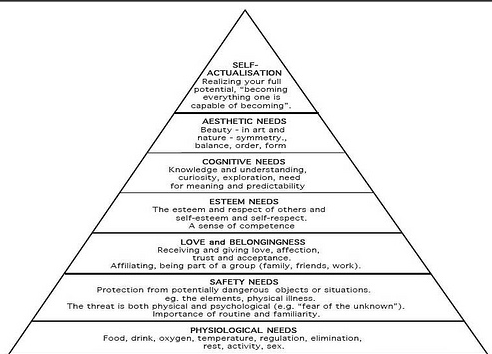5N1279: Assessing Adult Psychological Needs: A Case Study Using Maslow’s Hierarchy
| University | Kilkenny and Carlow Education and Training Board (KCETB) |
| Subject | 5N1279 human growth and development Assignment |
Assessment Brief
Part A – Instructions (to be completed by Internal Assessor)
| Module Title | Human Growth and Development |
|---|---|
| Module Code | 5N1279 |
| Assessment Title | The Psychology of Adulthood |
| Weighting | 30% |
| Assessment Type | Assignment |
| Feedback | 07/02/25 |
| Issue Date | 11/12/2024 |
| Due Date | 27/02/2025 |
| Group | NS/ PS/CC/HSS/SNA/MH |
| Internal Assessor | O KEYES |
| Assessment criteria and marks | |
| What you submit/complete | Maximum Mark Available |
Description of the interpersonal skills needed How and why these skills are necessary to meet the client’s needs (10 marks)
Strategies for individual – min 5 relevant strategies (2 marks) supported by relevant referenced theory (3 marks) Family based responses – min 5 relevant strategies (2 marks) supported by relevant referenced theory (3 marks) Community based support – min 5 relevant strategies (2 marks) supported by relevant referenced theory (3 marks) Government funded supports based, min 5 relevant strategies (2 marks) supported by relevant referenced theory (3 marks)
Course of action that is comprehensive, Min 5 X 1 The course of action meets the needs (2) and is supported by relevant referenced theory (3) |
10
10
5
5
5 5
5
5
5
5 |
Are You Searching Answer of this Question? Request Ireland Writers to Write a plagiarism Free Copy for You.
Case Study
One day Daisy woke up and couldn’t stop crying. She knew that this was coming. She knew that she’d been feeling wretched. She’d experienced it many times before.
It began in adolescence. Daisy found it difficult to enjoy things or get pleasure out of things. She was serious, withdrawn and socially inept. She found it difficult to talk to people and dreaded social or group outings. Consequently, she had one close friend since childhood and failed to make any new friends in adolescence. Her peers ignored her most of the time and that suited Daisy just fine. She found it difficult to sleep and often felt tearful and flat.
Daisy was an only child. Her mother had recurrent depression and this had a negative effect on her parents’ relationship. Her father and mother argued and then didn’t speak to each other for days. Her mother was always tearful, anxious and sad. Her father was angry, exasperated and worried. She withdrew to the comfort of the television, music and sleep.
Daisy spent most of her adolescence in a state of indecision about important issues. She couldn’t decide what she would like to do. Hence she enrolled on an arts course at university. Once there she had some reservations about her choice, but the career’s counsellor advised her that her course had good job prospects. So she stayed. While at university her depression worsened. It took her five years to finish her degree.
Daisy drifted from relationship to relationship in her search for a romantic partner. She saw that adults in society preferred to live together in pairs than living alone. She didn’t want to be alone. She knew that one day she would like to have a family. Career enhancement was secondary to that goal. Then she met Peter, who would eventually be her husband. Before the wedding, her depression struck again. She knew she should have never agreed to marry him, and she felt trapped in a giant snowball careering down the hillside towards the final crunch that was her wedding day.
Once more after the birth of her daughter, postnatal depression occurred. And now, her fourth, at the tender age of twenty-nine. Looking down the barrel of her pain in the neck husband. Her prospects were looking after four children on her own. There was also the prospect of divorce courts, loneliness and financial hardship.
She felt utterly immobilised. She resigned from her job. She retreated to her bed, drew the curtains and wanted to hide from the world forever. She lived in a state of misery, agitation and dread. She couldn’t sleep. She couldn’t even think sometimes. She felt fogged up in the head when concentrating, making decisions, or remembering things.
She particularly hated the mornings. She would wake up too early in the morning and be unable to fall back to sleep. So she would lie in the cool stillness of the morning alongside her snoring husband and wish she were dead. She would get her husband off to work, her daughter off to playschool, and then go back to bed. She experienced insomnia at night, and had a long, drugged nap in the afternoon. To kill some time.
To escape into some other place that wasn’t so cold and bleak. Then she would get up shortly before it was time to collect her daughter, and she would try to make it look to her husband that she had done something during the day so that he wouldn’t come home and shout at her again. But he always did. That’s because most emotions are contagious. When you’re around sad, angry or nervous people it’s hard not to feel sad, angry or nervous yourself. Her daughter Jane regularly asked “Why is Mum so sad and so quiet?” Daisy remembered her childhood and her Mum couldn’t explain her illness to Jane.
Eventually Peter confronted Daisy. He took her off to the psychiatrist. He’d been through it all before. At the psychiatric hospital they remembered her from the last two admissions. Daisy was assessed and a course of treatment was devised. Carefully chosen anti-depressant medication was administered. Daisy was kept in care, as often these drugs have side effects, which are intolerable, and the medication may need to be altered. The medication usually takes two to three weeks to work. Then some slow improvement in her mood was evident. Daisy also attended regular one-to-one counselling sessions with a counsellor she has been referred to by her psychiatrist. There were lots of tears shed but Daisy was given the emotional support necessary for her recovery. Not the fairy tale ending but a slow emergence from the cave, back to the light.
She knew the routine. It usually worked. One day she would find herself realising what a beautiful crisp autumn day it was. Daisy came to the hospital with straggly hair and a haunted look in her eyes. Now she was brushing her hair and the spark had returned to her eyes. The next day John, one of her fellow patients, remarked that her had not heard her laugh before. But she had just found something funny. Some pleasure. She was coming from the edge of the desert.
Her psychiatrist pointed out her family tree. Her great aunt had spent years in a psychiatric hospital and received ECT (electro-convulsive therapy) and her mother had been treated with anti-depressant medications over the years. There it was. Her depressive gene. Tumbling down the generations until it ended up in the ovum that was to become Daisy.
As she improved, she began to realise how much Peter had done for her. How much he cared. Soon he would be coming to take her home from the psychiatric hospital to start again at home. No knight in shining armour. This man had a short temper and he snored. But he loved her and as she recovered she began to contemplate saving the relationship. Another start.
| Learning Outcomes covered | ||
| The following learning outcomes are addressed by this assessment | ||
| Minor Award/Unit | Code | Learning Outcome Number |
| Human Growth and Development | 5N1279 | LO 1,2,3,4,5,6,7 |
Part B – Declarations and sign off (to be completed by the learner and the Internal Assessor)
Declaration of Original Work
| I confirm that this is my own original work, and meets the requirements of the Kilkenny and Carlow Education and Training Board Assessment Policy | |||
| Learner Declaration
(tick all that apply) |
☐ This is my original work
☐ I have referenced appropriately where required |
||
| Learner Name (Block capitals) | ID code (if used) | ||
| Learner Signature | Date | ||
Get Solution of this Assessment. Hire Experts to solve this assignment for you Before Deadline.
LEARNERS MUST INCLUDE A COPY OF THIS DOCUMENT WITH ALL ASSESSMENT SUBMISSIONS
| Feedback on Grading Decision
Note 1: All grades/marks are provisional and may change during the results approval processes Note 2: Feedback can be delivered in many forms in line with centre policy throughout the delivery of the module |
||
| An evaluation and rationale for the grading/marking outcome awarded:
|
||
| Feedback location | If feedback has been provided in an alternative location (eg VLE); please specify where:
|
Learner did not submit work [for formative feedback] ☐ |
| Internal Assessor Signature |
|
|
| Date | ||
Use Maslow’s Hierarchy is being used to assess Daisy’s needs.

http://physicalspace.files.wordpress.com/2010/10/maslows-hierarchy.jpg
Give details of the needs which are being met in the care situation and explain why this is the case. (Use Maslow’s Hierarchy to help you to assess the needs)
Give details of the needs which are not being met in the care situation and explain why this is the case. (Use Maslow’s Hierarchy to help you to assess the needs).
Detail the interpersonal skills that are required to meet the client’s needs.
Give a detailed description of appropriate strategies, which could be followed to meet the client’s needs.
- What can she do for herself?
- What can her family do that will help his situation?
- What is available in the community to help her situation?
- What government-funded support is there to help her situation?
- Give a detailed, comprehensive, and sensitive course of action that would help to meet her needs?
References
McLeod, Saul. (2024). Maslow’s Hierarchy of Needs from Abraham Maslow’s Hierarchy of Needs – BusinessBalls.com
Stuck in Completing this Assignment and feeling stressed ? Take our Private Writing Services
